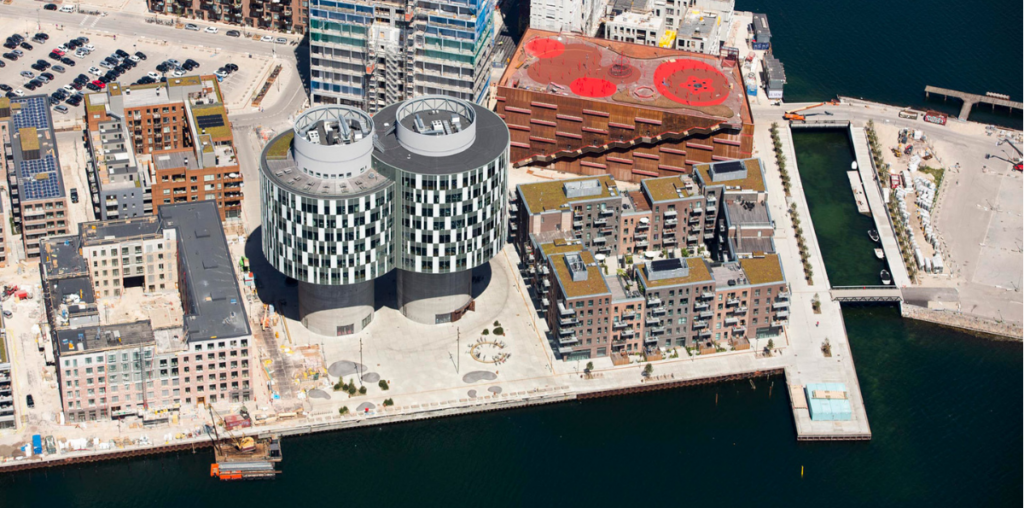
Nordhavn, Copenhagen’s cutting-edge district, exemplifies sustainable urban living. Credit: stateofgreen
In Copenhagen, the district of Nordhavn is redefining urban living with its innovative “five-minute city” concept.
This modern neighbourhood, built on a former industrial harbour, ensures that everything residents need—schools, shops, healthcare, green spaces, and public transport—is accessible within a five-minute walk. Nordhavn is a shining example of sustainable urban planning, blending convenience, environmental consciousness, and a high quality of life.
Nordhavn: Copenhagen’s “five minute” district
Nordhavn was designed with people, not cars, in mind. Wide cycling lanes, pedestrian-friendly streets, and a robust public transport system ensure that walking and biking are the primary modes of transportation. Mixed-use buildings combine residential, commercial, and recreational spaces, fostering diverse and self-sufficient communities. The district’s proximity to the harbour gives a feeling of escape, offering picturesque ocean views and a connection to nature even in an urban setting.
Sustainability is at the core of Nordhavn’s design. Energy-efficient buildings with solar panels and green roofs reduce the district’s carbon footprint. Public spaces are designed to manage stormwater naturally, preventing floods while enhancing biodiversity. The integration of renewable energy sources and a district heating system further solidify Nordhavn as a model of eco-friendly urban living.
Nordhavn is a blueprint for creating liveable, sustainable cities
Living in Nordhavn offers numerous benefits. The short distances mean reduced travel time, encouraging residents to walk, cycle, or use public transport rather than cars. Besides the obvious health benefits, this also improves air quality and reduces noise pollution. The emphasis on green spaces and waterfront access further promotes mental and physical health, while the close-knit layout fosters a sense of community.
Nordhavn’s transformation from an industrial port to a sustainable urban district has captured the attention of city planners worldwide. The combination of innovative design and commitment to sustainability makes this Danish district a blueprint for creating liveable cities that prioritise people and the planet. Its success proves that highly conscious urban planning can make daily life easier and healthier for its residents, while also addressing pressing environmental challenges.

